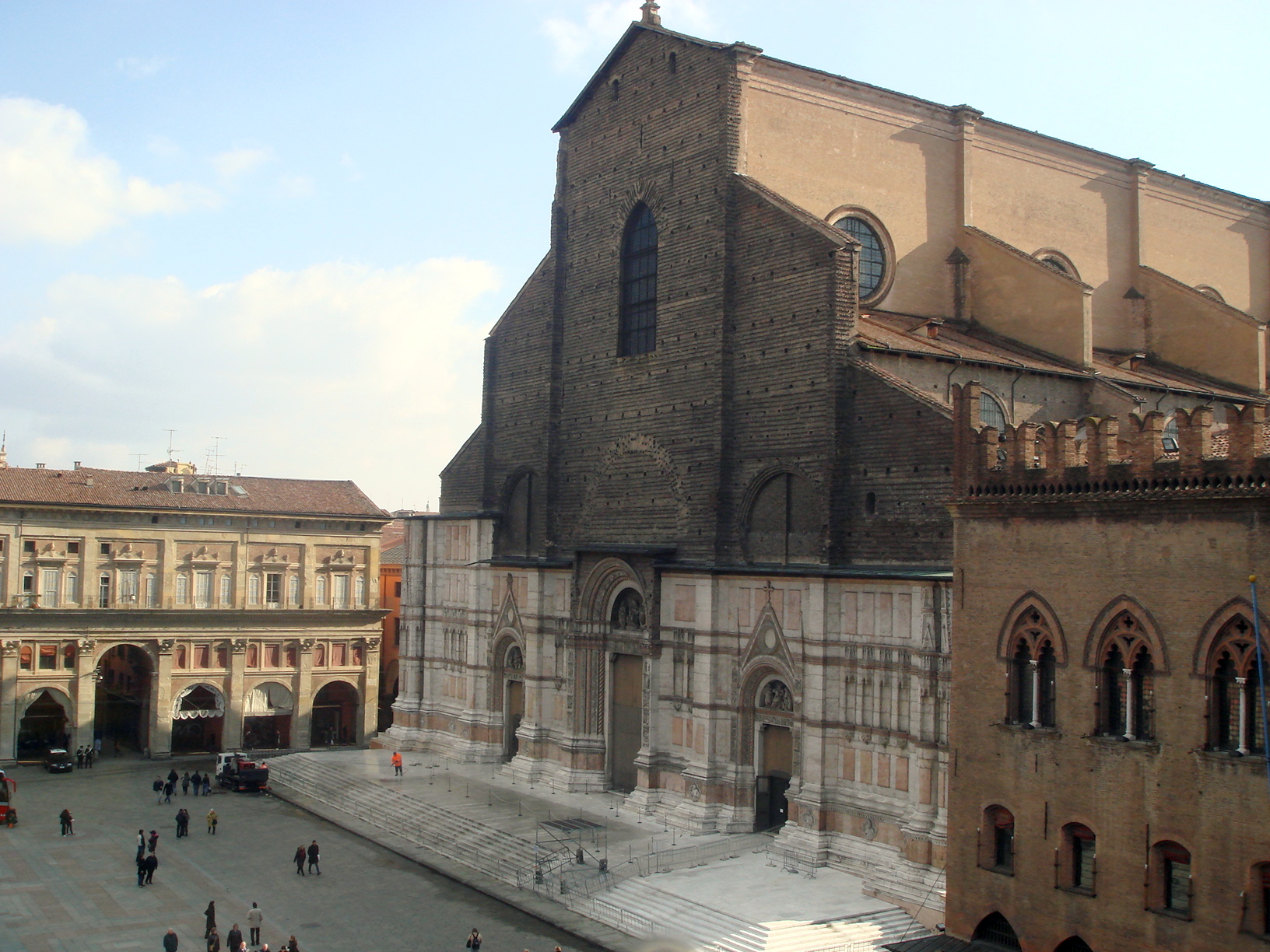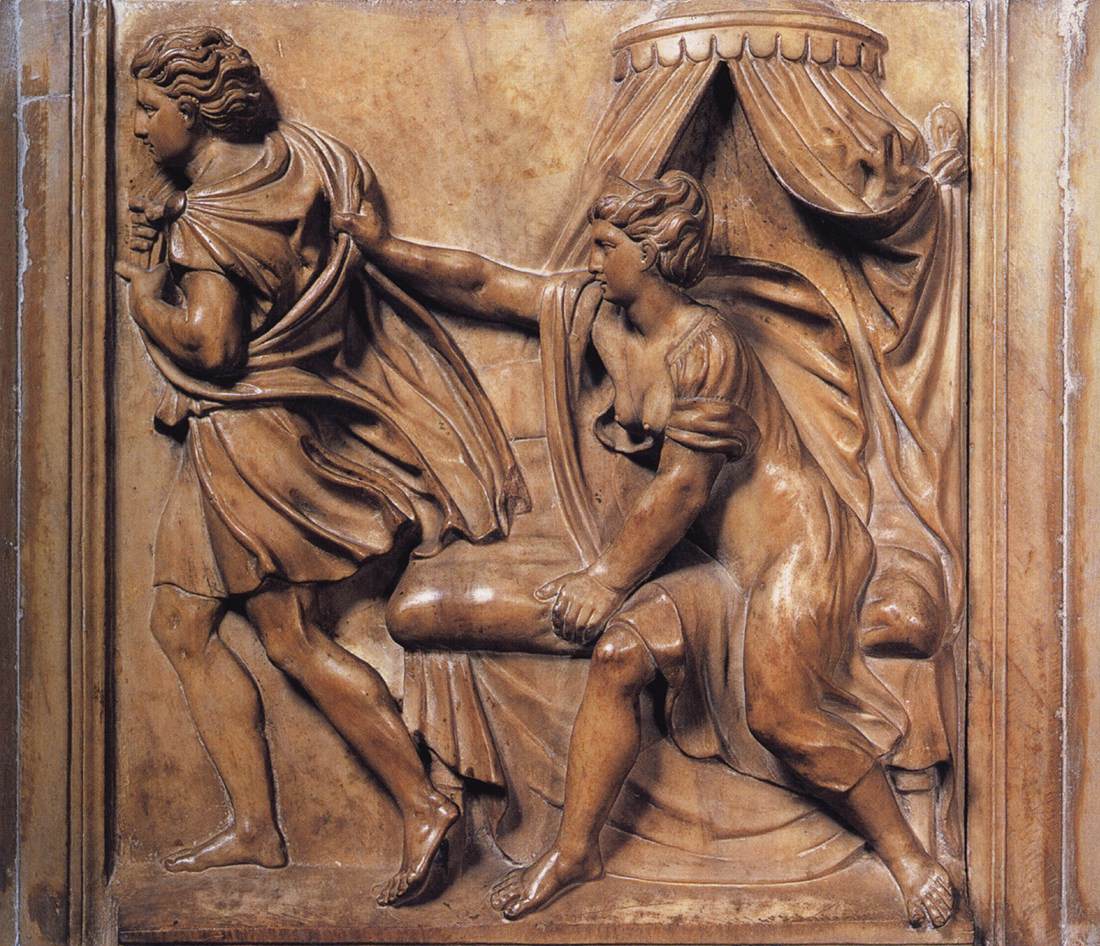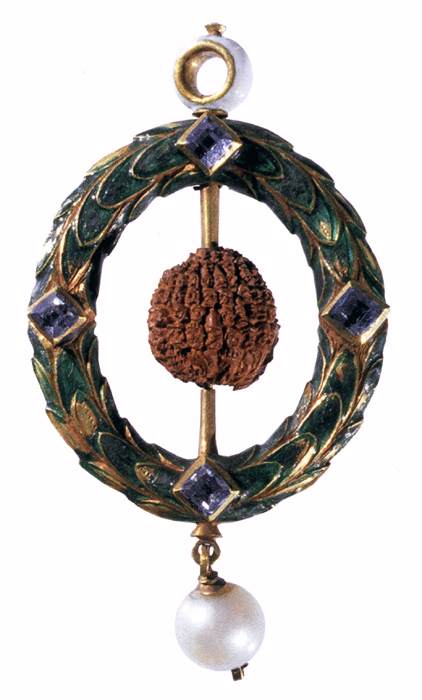Properzia de’ Rossi (about 1490 – 1530)
Among the small but significant group of women known to us today who succeeded as artists in Renaissance Italy, Properzia de’ Rossi was a pioneer. Argued to be one of the first women in Western European art to professionalise in the field of sculpture, her achievement was gained during a time when sculpture as an art form was believed to be exclusively the prerogative of men.
De Rossi is the only female artist to whom the artist and biographer Giorgio Vasari (1511-1574) devotes a chapter in his seminal text of the history of Renaissance artistic production, Le Vite de’ più eccellenti pittori, scultori, e architettori (The Lives of the Artists, 1550 and 1568). Little is known about her training and artistic development. She was born in Bologna, a haven at the time for female artistic production, also being the home to Lavinia Fontana (1552-1614) and Elisabetta Sirani (1538-1665). Unlike the majority of her female contemporaries, de Rossi did not have the benefit of being born into an artistic family, but she received training under the engraver Marcantonio Raimondi.
Archival documents point to her significant engagement with major commissions at the time, such as the Basilica of San Petronio. The most important architectural edifice of the city, records show that she worked alongside other important Bolognese contemporaries, including Amico Aspertini, Tribolo, Alfonso Lombardi, and Girolamo da Treviso. Though difficult to identify today, contracts of payment stipulate that de Rossi sculpted several celebrated reliefs of sibyls and angels, and it has been suggested that these are found on the right hand door of the basilica.
Few works survive with steadfast autograph attributions. Among these, a marble relief carved for the left-hand portal of San Petronio depicts the Old Testament story Joseph Fleeing Potiphar’s Wife (1525-1526). Since Vasari’s time, de Rossi’s choice of subject in this panel has often been interpreted biographically, thought to relate to an unhappy extramarital affair. However, this panel demonstrates her awareness of the latest developments in artistic representation, expressed in the naturalism of the human form and elegance of movement.
De Rossi moved seamlessly between large-scale marble works and a more unusual material – minute carving executed on fruit stones. Unique amongst her artistic output, her intricate carvings on peach and cherry pits were received with acclaim. Vasari cited her ‘capricious’ and ‘adept’ traits as reasons as to why she alighted on such an idiosyncratic choice of medium. However, the disadvantages de Rossi would have encountered as a woman in sixteenth-century Italy training as a professional sculptor meant that traditional tools and materials were far more difficult to come by, necessitating the need to be far more resourceful and seek an alternative means of expressing her skill.
The Grassi Family Crest is one example of the exquisite work she achieved in this regard. The Grassi were an illustrious Bolognese family who were at the peak of their power in the early-sixteenth century and therefore such a commission would have affirmed their familial status. Instead of the usual intaglio – small, engraved semi-precious gems – here eleven peach and plum stones are inserted into the silver and filigreework (it has been suggested this metalwork may have been executed by the brothers Giacomo and Andrea Gessi). The stones are carved with martyrs and virgins portrayed full length with their specific mottos and iconographical features. In the boxwood cross at the centre, thought to previously house relics, four smaller seeds depict the figures of Christ and the Virgin.
A debated attribution is the Carved Cherry Stone Pendant. An exceptional work, it features a cherry stone carved with over 100 individualised heads. This intricate and rare piece was formerly in the possession of the Grand Duke Francesco I de’ Medici and is thought to originally have been kept in the Duke’s wunderkammer, or cabinet of unusual objects of fascination.
In 1530 Pope Clement VII requested to meet the famed sculptor, but that same week de Rossi died of plague in the hospital of San Giobbe. She is buried in the Ospedale della Morte.
The intrigue around her use of fruit stones and stories of her litigious nature and unhappy marital life ensured a fascination remained around the artist that lasted well into the nineteenth century. The French painter Louis Ducis depicted de Rossi in a highly romanticised manner, showing the artist revealing her ‘last work’, a marble panel representing the suitably lovelorn subject of Ariadne abandoned on Naxos. The English poet Felicia Hemans (1793-1835) dedicated a poem to de Rossi in 1828 and she received her first dedicated art-historical account in English in Laura Ragg’s Women Artists of Bologna (1907).
Though she died impoverished and before reaching forty, de Rossi’s impact has informed her reputation as a pioneering woman for her time. In her work as a sculptor, she contested contemporary attitudes towards women’s achievement in the arts and succeeded in winning important commissions over her male contemporaries and fame for her work, despite the disadvantages she faced.
References
Sheila Barker ed. Women artists in Early Modern Italy: Careers, Fame and Collectors. Harvey Miller Publishers: Belgium, 2016.
Vera Fortunati and Irene Graziani. Properzia de’ Rossi: una scultrice a Bologna nell’età di Carlo V. Editrice Compositori: Bologna, 2008.
Laura Ragg. The Women artists of Bologna. Methuen & Co.: London, 1907.
Italian Women Artists: From Renaissance to Baroque. Exh. Cat. National Museum of Women in the arts, Washington DC, March 16-July 15 2007. Skira Editore: Milano, 2007.
Further Reading
Babette Bohn. Women artists, Their Patrons, and Their Publics in Early Modern Bologna (forthcoming).
Fredrika H. Jacobs. “The construction of a life: Madonna Properzia De’Rossi ‘Schultrice’ Bolognese”. Word & Image, 9:2 (1993): 122-132, DOI: 10.1080/02666286.1993.10435481
Sally Quin. “Describing the Female Sculptor in Early Modern Italy: An Analysis of the vita of Properzia de’ Rossi in Giorgio Vasari’s Lives.” Gender & History, 24 (2012): 134-149. doi:10.1111/j.1468-0424.2011.01672.x
Images
Grassi Family Crest, first half of the sixteenth century, silver filigree and carved peach and plum stones, 39 x 22 cm, Museo Civio Medievale, 2135, Bologna. Photo: Web Gallery of art.
Facade of San Petronio in Piazza Maggiore square in Bologna, Italy. Picture by Giovanni Dall’Orto, February 9 2007.
Joseph Fleeing Potiphar’s Wife, 1525-1526, marble. Museo di San Petronio, Bologna. Photo: Web Gallery of art.
Carved Cherry Stone Pendant, gold, diamonds, enamel, pearls and cherry stone, 4.2 x 2.3 cm, Palazzo Pitti, Museo degli Argenti, inv. Gemme 1921, no. 708, Florence. Photo: Web Gallery of art.
Louis Ducis, Properzia de’ Rossi finishing her last bas-relief, 1822, oil on canvas. Musée de l’Évêché de Limoges. Photo: Wikipedia.
Woodcut engraving showing portrait of Properzia de’ Rossi from her Vita in Giorgio Vasari, Le vite de’ piu eccellenti pittori, scultori, et architettori, 1568. Photo: Wikipedia.





